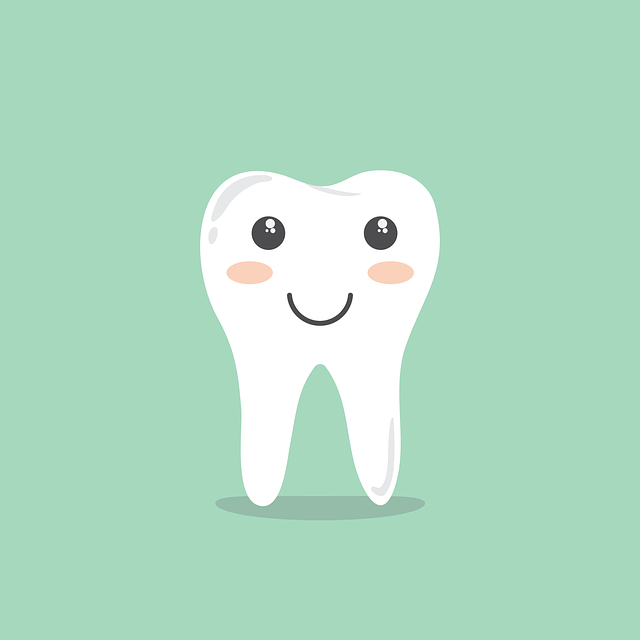Skip the Braces: Can You Just Get a Retainer Instead of Braces?
Are you tired of the idea of spending months or even years with a mouth full of metal? You’re not alone. The thought of braces can be daunting for many individuals, especially those seeking a discreet and convenient solution for straightening their teeth. But what if we told you there might be an alternative to braces that could save you from the hassle and discomfort? In this article, we explore the possibility of skipping the braces altogether and opting for a retainer instead. Join us as we delve into the world of orthodontics, providing you with confident, knowledgeable, and neutral insights to help you make an informed decision about your dental health.
1. Understanding the Role of Braces and Retainers in Orthodontic Treatment
In orthodontic treatment, braces and retainers play a crucial role in correcting misaligned teeth and achieving a beautiful smile. Braces are dental appliances that consist of brackets, wires, and bands. They work by exerting gentle pressure on the teeth, gradually moving them into the desired position. This process, known as tooth movement, is facilitated by the constant adjustments made to the braces throughout the treatment. Braces are highly effective in addressing a wide range of orthodontic issues, such as overcrowding, spacing, crossbite, overbite, and underbite.
Retainers, on the other hand, are custom-made appliances designed to maintain the corrected position of the teeth after braces are removed. They help prevent the teeth from shifting back to their original, misaligned positions. Retainers can be removable or fixed, depending on the individual’s needs. It is essential to wear retainers as instructed by the orthodontist to ensure the long-term success of the orthodontic treatment. While braces are primarily used to move the teeth, retainers are crucial for maintaining the results achieved through braces.

2. Exploring the Alternatives: Can You Replace Braces with a Retainer?
While braces are the traditional go-to option for correcting misaligned teeth, retainers are often considered as an alternative. But can you really replace braces with a retainer? Let’s explore the alternatives and find out.
1. Clear aligners: These are transparent, removable trays that gradually shift your teeth into the desired position. They are a popular choice for those looking for an alternative to braces because they are virtually invisible.
2. Palatal expanders: This device is used to widen the upper jaw, which can help create more space for crowded teeth. Palatal expanders are typically recommended for children and teenagers who are still growing.
3. Retainers: While retainers are commonly used after braces to maintain the alignment of teeth, they can also be used as a standalone treatment for minor tooth movements. However, it’s important to note that retainers are not as effective as braces for more complex orthodontic issues.
4. Porcelain veneers: Veneers are thin shells that are bonded to the front of your teeth to improve their appearance. While they can’t correct major misalignments, veneers can be a good option for minor cosmetic changes.
Ultimately, whether you can replace braces with a retainer depends on the severity of your orthodontic issue. It’s best to consult with an orthodontist who can evaluate your specific case and recommend the most suitable treatment plan for you.

3. The Benefits and Limitations of Using a Retainer for Teeth Straightening
Retainers are a crucial component of teeth straightening treatment. They offer several benefits that contribute to achieving a beautiful and long-lasting smile. One of the key advantages of using a retainer is that it helps maintain the results achieved through orthodontic treatment. After braces or aligners have successfully moved the teeth into their desired positions, a retainer ensures that the teeth stay in place. This is because the bone surrounding the teeth needs time to adapt to the new positions, and a retainer helps to stabilize the teeth during this crucial phase.
Another benefit of using a retainer is that it can help correct minor relapses or shifts that may occur after the initial treatment. Even after completing orthodontic treatment, the teeth may still have a tendency to move slightly. Wearing a retainer, especially during the first few months after treatment, can help prevent any further shifting and maintain the desired alignment. Additionally, retainers are generally comfortable and easy to wear, making them a convenient option for maintaining the results of teeth straightening treatment.
- Limitations of Using a Retainer:
While retainers offer numerous benefits, it is important to be aware of their limitations. One limitation is that retainers cannot correct major orthodontic issues on their own. They are primarily used to maintain the results achieved through braces or aligners and are not intended to move teeth into new positions. Therefore, if significant alignment or bite issues are present, additional orthodontic treatment may be necessary.
Another limitation is that retainers require regular maintenance and proper care. They need to be cleaned regularly to prevent the buildup of plaque and bacteria. Additionally, retainers can be lost or damaged if not handled with care. It is important to follow the instructions provided by the orthodontist regarding wearing and caring for the retainer in order to ensure its effectiveness and longevity.

4. Orthodontic Treatment Options: Choosing Between Braces and Retainers
When it comes to orthodontic treatment options, the two most common choices are braces and retainers. Each option has its own unique benefits and considerations, and understanding these differences can help you make an informed decision.
Braces: Braces are a tried-and-true method for straightening teeth and correcting bite issues. They consist of brackets, wires, and bands that are applied to the teeth and adjusted periodically by an orthodontist. Here are some key points to consider when choosing braces:
- Braces are suitable for more complex cases that require significant teeth movement and alignment adjustments.
- They can be made from different materials, including traditional metal, clear or ceramic braces, and even lingual braces (placed on the back of the teeth for a more discreet appearance).
- The treatment duration with braces can vary depending on the individual case, typically ranging from 1 to 3 years.
- Braces require regular visits to the orthodontist for adjustments and maintenance.
Retainers: Retainers, on the other hand, are typically used after braces to maintain the achieved results or for minor adjustments. They are custom-made devices that hold the teeth in their new positions. Here are some key points to consider when choosing retainers:
- Retainers are best suited for cases where the teeth alignment is already close to ideal, and only minor corrections are needed.
- They are typically made from clear plastic or wire and can be removable or fixed (bonded to the teeth).
- Retainers are less noticeable compared to braces, making them a more discreet option.
- Unlike braces, retainers usually require less frequent visits to the orthodontist.

5. The Science Behind Braces: How They Effectively Align Your Teeth
Braces are a highly effective orthodontic treatment designed to align your teeth and create a beautiful, straight smile. The science behind braces is rooted in the understanding of how teeth move and the concept of continuous pressure. By applying gentle and consistent pressure to the teeth, braces gradually shift them into their desired positions.
The process begins by bonding small brackets to the front surface of each tooth. These brackets act as anchors for the braces. A wire is then threaded through the brackets, connecting them together. This wire applies pressure to the teeth, encouraging them to move. Over time, the braces are adjusted to increase the pressure and guide the teeth into proper alignment. Within this process, there are several important factors at play:
- Archwires: These wires are responsible for exerting the necessary force to move the teeth. They are usually made of metal or a flexible material that allows for gradual adjustments.
- Elastics: Elastics, also known as rubber bands, are often used in conjunction with braces to correct specific bite issues. They help align the upper and lower jaws, ensuring proper bite functionality.
- Brackets and bands: Brackets are attached to the teeth, while bands are placed around the molars to provide additional stability. These components work together to hold the archwire in place and facilitate tooth movement.
By understanding the science behind braces, you can appreciate the precision and expertise involved in orthodontic treatment. The continuous pressure exerted by braces allows for controlled tooth movement, ultimately resulting in a beautifully aligned smile and improved oral health.
6. Retainers: A Removable Solution for Maintaining Straight Teeth
Retainers are a highly effective solution for maintaining the straightness of your teeth once orthodontic treatment is complete. They are custom-made devices that are designed to fit comfortably over your teeth, helping to prevent them from shifting back into their original positions. Unlike braces, retainers are removable, making them a convenient option for those who desire flexibility.
One of the key advantages of retainers is their versatility. They can be made from different materials, including clear plastic and metal, depending on your preference and needs. Retainers can also be customized to fit your specific dental structure, ensuring a comfortable and secure fit. Plus, thanks to their removable nature, they are easy to clean and maintain, allowing for optimal oral hygiene. Whether you wore braces or aligners, retainers are an essential part of post-treatment care, as they help to preserve the results achieved by your orthodontic treatment.
- Retainers are an effective solution for maintaining the straightness of your teeth.
- They are custom-made to fit comfortably over your teeth.
- Retainers prevent your teeth from shifting back into their original positions.
- They are versatile and can be made from different materials.
- Retainers can be customized to fit your specific dental structure.
- They are easy to clean and maintain due to their removable nature.
- Retainers are an essential part of post-treatment care to preserve the results achieved by orthodontic treatment.
Remember, wearing your retainer as instructed by your orthodontist is crucial to maintain the straightness of your teeth. Consistency is key to ensuring that your smile remains beautiful and aligned. If you have any questions or concerns about retainers or need assistance with your post-treatment care, don’t hesitate to reach out to our knowledgeable team.
7. Making an Informed Decision: Consulting with an Orthodontist
When it comes to making decisions about orthodontic treatment, consulting with an orthodontist is essential. Orthodontists are dental specialists who have undergone additional years of training in order to diagnose, prevent, and treat dental and facial irregularities. By seeking their expertise, you can ensure that you are making an informed decision about your oral health.
During a consultation with an orthodontist, they will evaluate your teeth and jaw structure to determine the most suitable treatment options for your specific needs. They will take into consideration factors such as your age, facial profile, and the severity of your orthodontic issues. Orthodontists have a wide range of treatment methods at their disposal, including braces, clear aligners, and other appliances. They will explain each option to you, outlining the benefits and potential drawbacks of each. This will allow you to make an educated decision about which treatment is best for you.
- Expertise: Orthodontists are highly skilled professionals with specialized knowledge in correcting dental and facial irregularities.
- Personalized Evaluation: During a consultation, an orthodontist will assess your unique needs and tailor a treatment plan accordingly.
- Treatment Options: Orthodontists offer a variety of treatment options, ranging from traditional braces to innovative clear aligners.
- Benefits and Drawbacks: By consulting with an orthodontist, you will gain a clear understanding of the pros and cons of each treatment option.
Frequently Asked Questions
Q: Can I use a retainer instead of braces to straighten my teeth?
A: While retainers can help maintain teeth alignment, they are not typically used as a substitute for braces when it comes to straightening teeth.
Q: How do braces work to straighten teeth?
A: Braces apply continuous pressure to the teeth, gradually shifting them into their desired position. This process allows the bone surrounding the teeth to remodel and adapt to the new alignment.
Q: What is the main purpose of a retainer?
A: Retainers are primarily used to hold teeth in their new position after braces have been removed. They help maintain the alignment achieved through orthodontic treatment.
Q: Can retainers move teeth?
A: Retainers are not designed to actively move teeth like braces do. Instead, they function by preventing the teeth from shifting back to their original position.
Q: Are there any cases where a retainer alone can straighten teeth?
A: In some mild cases of teeth misalignment, a retainer may be sufficient to make slight adjustments. However, this is generally not the norm, and braces are typically recommended for more significant tooth movement.
Q: How long do braces need to be worn compared to retainers?
A: Braces are typically worn for an average of 1 to 3 years, depending on the complexity of the case. Retainers, on the other hand, are used indefinitely, often at a reduced frequency, to maintain the teeth’s alignment.
Q: Are retainers uncomfortable to wear?
A: Initially, some patients may find retainers slightly uncomfortable or unfamiliar. However, with time, most individuals adjust to wearing them, and any discomfort diminishes.
Q: Can I get a retainer if I never had braces?
A: Yes, retainers can be used even if you have not undergone orthodontic treatment with braces. In some cases, they may be recommended to address minor misalignments or to correct minor relapses after previous orthodontic treatment.
Q: Do retainers require regular maintenance?
A: Yes, retainers require regular maintenance to ensure their effectiveness. This includes cleaning them daily, avoiding certain foods that could damage them, and following the orthodontist’s instructions for wear and care.
Q: Can I switch from braces to a retainer mid-treatment?
A: It is not common to switch from braces to a retainer mid-treatment. The decision to transition from braces to a retainer is typically made by the orthodontist once the teeth have reached the desired alignment and stabilization is needed.
Final Thoughts
In conclusion, the question of whether you can skip braces and opt for a retainer instead is a topic that requires careful consideration. While retainers can be a viable option for certain cases of mild misalignment or after braces treatment, they are not a one-size-fits-all solution. It is crucial to consult with a qualified orthodontist who can evaluate your specific needs and provide expert guidance.
Key Takeaways:
1. Retainers can be an alternative to braces in some cases, particularly for mild misalignment or after braces treatment.
2. However, retainers are not suitable for all orthodontic issues, and only a professional orthodontist can determine the best course of treatment.
3. A thorough consultation with an orthodontist is essential to assess your individual needs and create a personalized treatment plan.
4. It is important to follow your orthodontist’s recommendations and wear your retainer as instructed to achieve the desired results.
5. Remember that orthodontic treatment is a journey, and patience and commitment are key in achieving a healthy and confident smile.
With the right professional guidance and a willingness to adhere to the recommended treatment plan, you can make an informed decision regarding braces or retainers and ultimately achieve the smile you desire.






